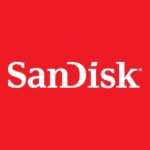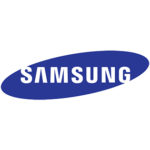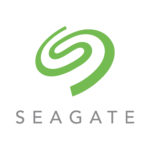This website uses cookies so that we can provide you with the best user experience possible. Cookie information is stored in your browser and performs functions such as recognising you when you return to our website and helping our team to understand which sections of the website you find most interesting and useful.
Defining IT with software is assumed to be a disruptive force. Reduce the cost of infrastructure by throwing out the high cost, purpose-built and proprietary hardware. Replace it with commodity priced-white boxes that are transformed into server, networking, and storage platforms with software—and in some cases, all three in one–converged server/networking/and storage platforms. Disruption to the traditional vendors of the proprietary hardware-based stuff comes in the form of significantly reduced cost for infrastructure as seen by the enterprise consumer. Who in their right mind would ever buy that old-fashioned proprietary hardware again?
I’ve stated in the past that I think Software Defined is a fad for reasons that are discussed here. Now I’d like to add one more.
Those who believe that software-defining things is a disruptive force appear to assume that commodity hardware will always be dumb commodity hardware and that the commodity hardware producers will always be content to live at the bottom of the value stack while they let others add value and take their premium, software-defined revenues to the bank. However, this assumption ignores recent developments that indicate more than a willingness by certain very large commodity players to move up and away from mere commodity status. Some examples from the storage industry:
Western Digital
 On Sept. 9, 2013, Western Digital’s HGST subsidiary acquired Virident, a supplier of enterprise server-side Flash storage hardware and software. HGST Virident software now offers Virident Space for example that allows clustering of server-based flash storage for up to 16 clustered servers and competes with the likes of EMC’s VSAN software-defined storage platform.
On Sept. 9, 2013, Western Digital’s HGST subsidiary acquired Virident, a supplier of enterprise server-side Flash storage hardware and software. HGST Virident software now offers Virident Space for example that allows clustering of server-based flash storage for up to 16 clustered servers and competes with the likes of EMC’s VSAN software-defined storage platform.
SanDisk
 On June 16, 2014, SanDisk made a similar move to Western Digital’s with the acquisition of Fusion-io to build-out its portfolio of enterprise-directed solid state device offerings that will include server-side software and all-Flash storage arrays.
On June 16, 2014, SanDisk made a similar move to Western Digital’s with the acquisition of Fusion-io to build-out its portfolio of enterprise-directed solid state device offerings that will include server-side software and all-Flash storage arrays.
Samsung
 While more consumer-oriented and diversified, Samsung most recently, Samsung announced on November 3, 2014, that it acquired Proximal Data, Inc., a developer of server-side caching software that works within virtualized systems in an effort to build-out its enterprise Flash product portfolio.
While more consumer-oriented and diversified, Samsung most recently, Samsung announced on November 3, 2014, that it acquired Proximal Data, Inc., a developer of server-side caching software that works within virtualized systems in an effort to build-out its enterprise Flash product portfolio.
Seagate
 Of the four cited here, Seagate has been perhaps the most aggressive commodity storage player to show willingness to move up the value chain. It now offers a multi-PB, scale-out HDD array aimed at HPC and Big Data environments thanks to its acquisition of Xyratex, plus its EVault data protection appliance. But perhaps the most interesting and potentially disruptive of Seagate’s product introductions is the Kinetic Drive – a software-defined disk drive.
Of the four cited here, Seagate has been perhaps the most aggressive commodity storage player to show willingness to move up the value chain. It now offers a multi-PB, scale-out HDD array aimed at HPC and Big Data environments thanks to its acquisition of Xyratex, plus its EVault data protection appliance. But perhaps the most interesting and potentially disruptive of Seagate’s product introductions is the Kinetic Drive – a software-defined disk drive.
The Upshot
Three of these players (SanDisk, Seagate, and Western Digital) have a combined market cap of $68 billion. All appear to be in no mood to be content with simply letting others hire a few software engineers to define the value of their stuff. They are more than capable of writing device-embedded software, and I would not be surprised to see them disrupt the software defined storage model by adding their own software defined value. They can compete on price. They can add value to commodity. And they have huge market reach.

